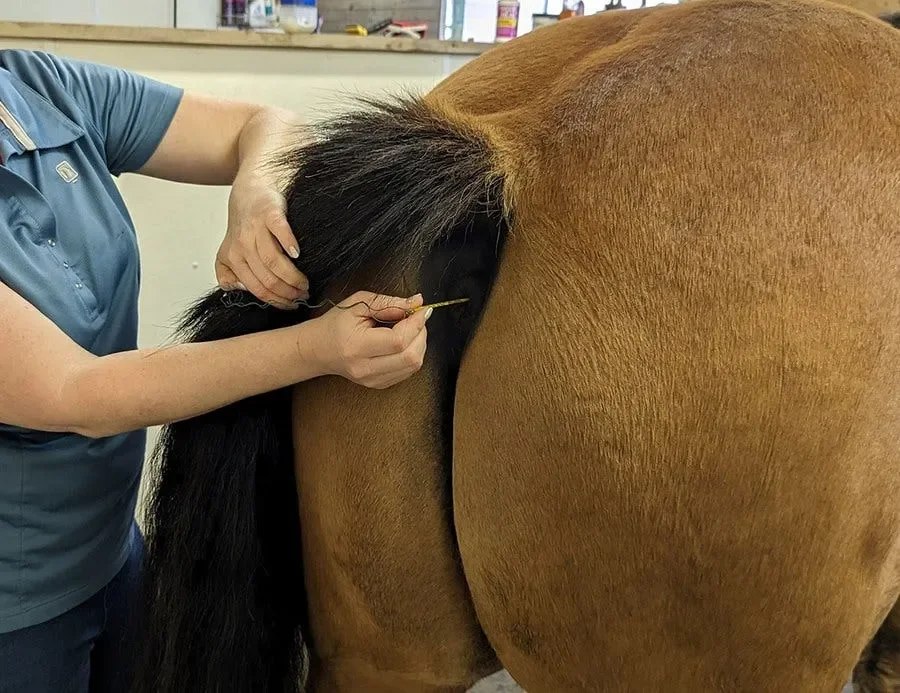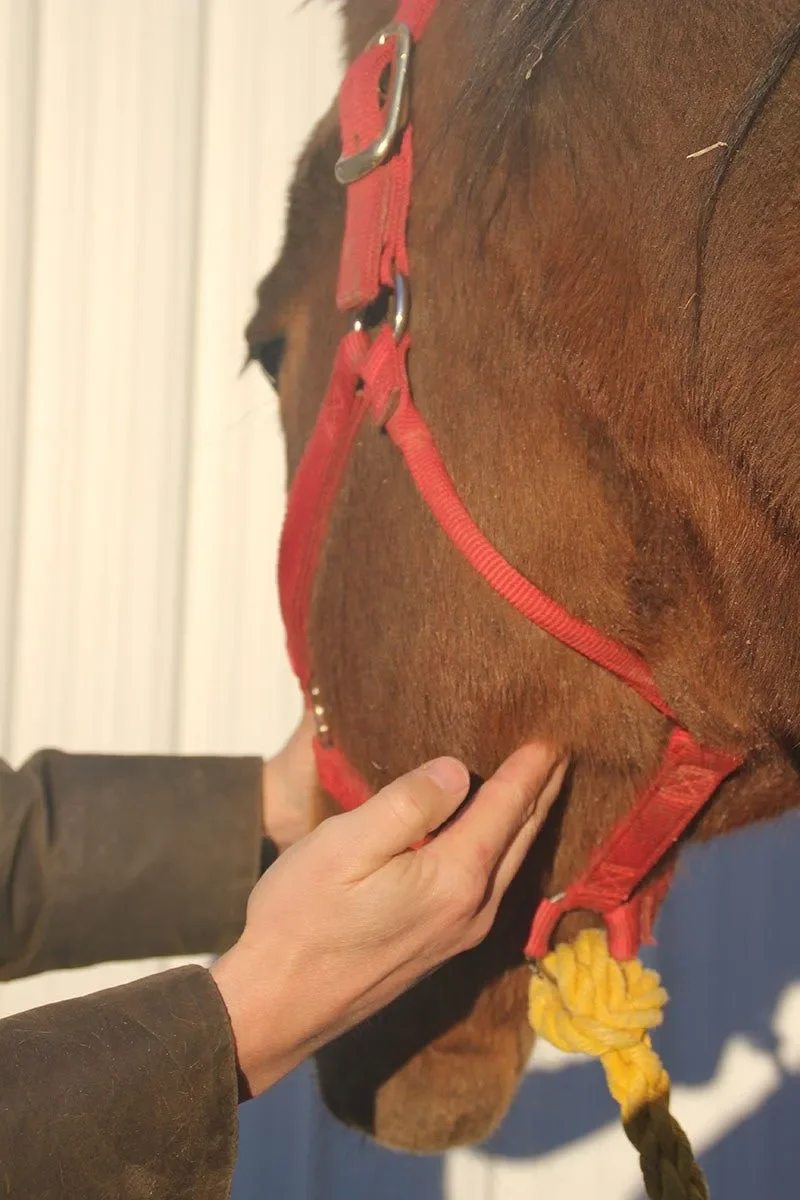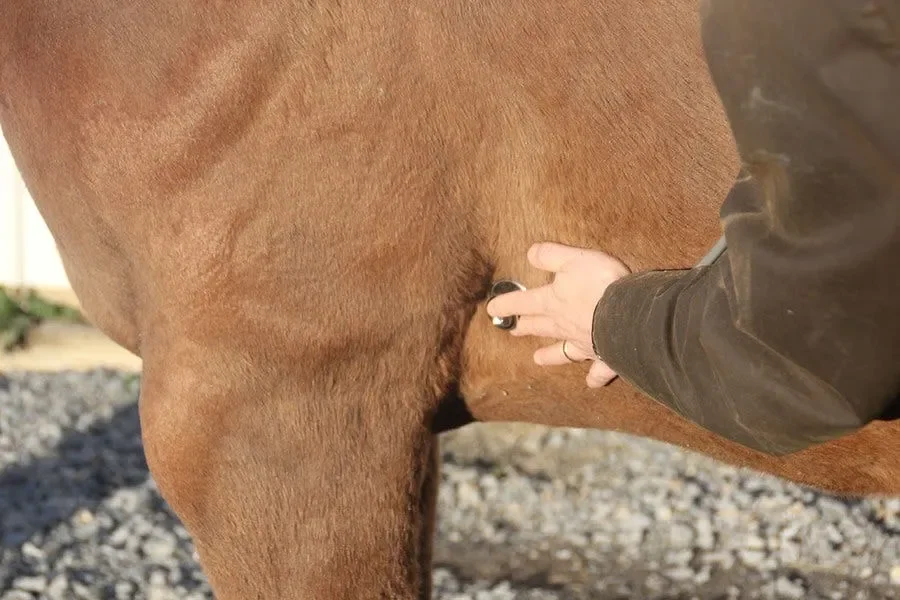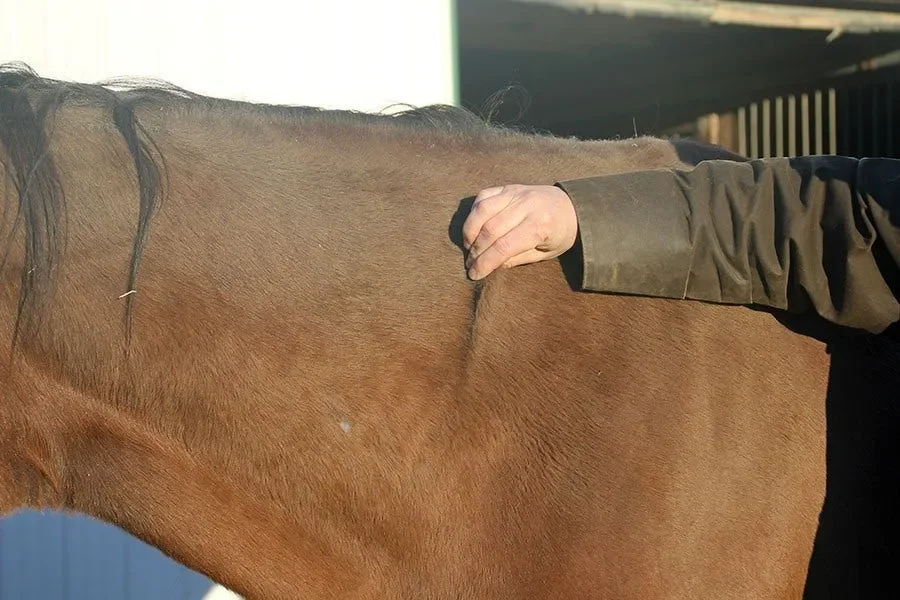Know Your Horse's Vital Signs
As horse owners, we often have an instinctive ability to scan our horses for signs of health or discomfort, sometimes without even realising it. A quick glance while chatting at the paddock gate, and we’re already assessing posture, alertness, and movement. But it’s the subtle changes we can’t see that often matter most.
Understanding your horse’s vital signs - temperature, pulse, and respiration (TPR) - is essential. These indicators can help you detect illness early, monitor recovery, and communicate effectively with your vet.
Why Knowing Your Horse’s Vital Signs Matters
Being familiar with your horse’s normal vital signs helps you:
Spot early signs of illness or pain
Monitor response to treatment or medication
Identify which body system might be affected
Provide accurate information to your vet
What’s Normal?
Temperature, pulse, and respiration (TPR) are the core vital signs that reflect essential bodily functions in horses, and understanding what’s normal, both at rest and after exercise, is key to recognising when something’s not quite right; along the way, you’ll also encounter a few helpful abbreviations worth knowing. Here are the typical ranges for a healthy adult horse at rest:
Heart Rate (HR): 24-40 beats per minute (bpm)
Rectal Temperature: 37-38.5°C
Respiration (breathing) Rate (RR): 12-20 breaths per minute
Other useful indicators include:
Gums or mucous membranes (conjunctiva, inside nostrils): Light pink and moist
Capillary Refill Time (CRT): Less than 2 seconds
Gut Sounds: Audible on both sides of the abdomen
Manure: 8-12 piles per day
Urination: 3-4 times per day
Water Intake: 20-25 litres per day for a 500kg horse
While these ranges represent general norms, every horse is an individual, so it’s important to learn what’s normal for your horse to better recognise any changes that might signal a problem.
How to Check Vital Signs
With just a thermometer, a watch, your hands, and ears, you can check your horse’s vital signs, and a stethoscope can make the process even easier and more precise.
Temperature
If you're using a glass-mercury thermometer, tie a brightly coloured string or tape through the end hole to make it easier to find if dropped. Attaching a small clip or clothes peg to the string allows you to secure it to the horse’s tail while taking the reading.
A digital thermometer is quicker and is less rigid than a glass mercury thermometer, often giving a reading in less time and with less risk of breakage. Whichever type you use, apply a lubricant and, with your horse tied or held, approach from the side, gently move the tail aside, and insert the thermometer into the rectum. Hold it securely and avoid letting go.
Most thermometers give a fairly accurate reading within a minute, but waiting up to three minutes can improve accuracy.
Low temperature may indicate circulatory issues or extreme cold exposure.
High temperature can result from exercise, fear, pain or excitement, and if there is an illness or infection.
False readings can occur if manure or gas is present in the rectum, so if the temperature seems unusually low, walk your horse for 5-10 minutes to help clear the area, then take the reading again.
Pulse
The pulse reflects the flow of blood through the arteries with each heartbeat and can be measured by gently placing your index and middle fingers on one of three key arteries: the mandibular (under the jaw), the digital (outside the fetlock), or the transverse facial artery (just to the side of the eye). These arteries feel like narrow, firm tubes beneath the skin.
Take your time - count the pulse for a full 60 seconds. It can be slow and sometimes tricky to detect, so patience is key. If you’re in the right spot but rush, you might miss it entirely.
Pulse rate can increase due to fear, pain, excitement, or cardiovascular issues. A lower rate may be normal in very fit horses or could indicate an electrical issue in the heart.
Keep in mind:
Small ponies can have slightly higher resting pulse rates than larger horses.
Adult horses typically have a heart rate of 32-36 beats per minute, though some may range from 24 to 40 bpm.
Foals vary by age: newborns range from 80–100 bpm, while older foals (a few weeks to months) range from 60–80 bpm.
In addition to rate, assess the quality of the pulse, whether it feels strong or weak, thready or full. This takes practice, and comparing pulses across different horses over time can help you develop a feel for what’s normal and what’s not.
Heart Rate (HR)
Heart rhythm can be assessed by palpation of the heartbeat and pulse. In slim animals, the heartbeat can often be felt by placing your hand on the left lower chest, just behind the elbow.
To get an accurate reading, the horse should be calm, cool, rested, and relaxed. Heart rate can rise due to exercise, excitement, fear, or hot weather. If elevated (above 44 bpm), eliminate the reason for excitement and help the horse settle quietly; its heart rate should return to normal once the stimulus is removed.
A heart rate above 60 bpm is common in horses experiencing pain or discomfort. It is important to contact your veterinarian, especially if these horses are showing symptoms of colic, sickness, lacerations/fractures or other signs of illness.
In healthy horses, heart rate typically rises briefly in response to stimuli (like a sudden fright) and then returns to resting levels within a minute. In contrast, a sick horse may sustain a heart rate of 80–120 bpm for extended periods, which requires urgent veterinary attention.
Beats and hence pulse should be regular and consistent. After exercise, especially in endurance or cross-country horses, heart rate recovery is a key indicator of fitness. Horses working strenuously can reach heart rates of 240-250 bpm, but this should drop to normal within 15-60 minutes after stopping. At checkpoints, fit endurance horses may arrive with heart rates of 125-200 bpm, often recovering to below 70 bpm within 10–15 minutes. Occasional missed beats are common and often harmless, but identifying which beats are missing requires experience and should be left to the expertise of your vet. Consistently irregular heart rhythms or patterns of irregularity may signal a problem; consult your veterinarian if you notice these signs.
Respiration Rate (RR) - Breathe-in and breathe-out equals one
To monitor your horse’s respiration rate (RR), stand slightly behind and to the side, watching the chest and abdomen rise and fall. Count one full breath as an inhalation followed by an exhalation. You can also observe the flare of the nostrils or use a stethoscope to listen for breaths.
Respiration rates vary:
Ponies may breathe slightly faster, up to 20-24 breaths per minute.
Foals have age-dependent rates.
Exercise naturally increases RR, but it should return to normal once the horse is rested.
If the rate remains elevated after rest or the horse appears to be working harder to breathe, this may indicate a problem. RR can triple during walking, and in hot conditions or after intense exercise, it may rise to 120 breaths per minute. However, in a fit horse, it should drop to 40-50 breaths per minute within 10–15 minutes of stopping.
Heart Rate to Respiration Rate Ratio
In healthy horses, the heart typically beats about four times for every breath, a ratio of approximately 4:1. If the respiration rate exceeds the heart rate, this is a serious warning sign that the horse may be in distress and should be stopped and rested immediately. If the condition doesn’t resolve quickly, veterinary attention is essential. Respiration rate can rise due to pain, fever, toxicity, or illness. If your horse’s RR is elevated without an obvious cause, such as exercise, fear, or excitement, it may be a sign of underlying discomfort, injury, or disease.
Capillary Refill Time (CRT)
CRT measures how quickly small blood vessels refill after being compressed. To check it, gently press a finger against the gums above the front teeth until the area turns pale (yellowy/white). Then quickly remove the pressure and count how many seconds it takes to return to a healthy pink; this should be less than 2 seconds. If it takes longer, or the gums appear unusually pale, dark, or discoloured, contact your veterinarian.
Intestinal Gut Sounds
Gut sounds reflect the movement of the digestive tract as it contracts and relaxes, moving food and fluid along. These sounds can vary in volume and frequency, and assessing them accurately takes practice, especially without a stethoscope.
To listen:
Place your ear or stethoscope on both sides of the abdomen, above and below the flank. You should always be able to hear sounds in all areas if using a stethoscope.
Normal sounds include gurgles, rumbles, tinkling, and gas.
Overactive movement of the guts may be heard easily standing away from the horse, but quiet sounds can be hard to hear even with a stethoscope or an ear to the abdomen.
Changes in gut sounds can be normal, but persistent silence or excessive noise may indicate a problem with gut motility and should be investigated.
With experience, some people can even detect sand in the gut. According to Dr Derek Major of Agnes Banks Equine Clinic, this can be heard by placing a stethoscope midway between the umbilicus (belly button) and the xiphisternum (the lowest extant of the rib cage). The sound is subtle, like a gentle wave over sand, and may take several minutes to distinguish from normal digestive noises.
Additional Daily Observations
Manure: Check for changes in consistency or frequency. Hard, dry manure may indicate dehydration, while loose or cow-pat-like manure could suggest digestive upset.
Hydration: Pinch the skin near the shoulder. It should snap back in less than a second. Delayed return (2-3 seconds or more) may signal dehydration, especially in older horses.
Breath Odour: A horse’s breath should be neutral or slightly sweet. A foul or sour smell could point to dental issues.
Choosing a stethoscope
A stethoscope aids in monitoring heart, lung, trachea, and gut sounds - key indicators of your horse’s health. Stethoscopes cost from $30 to $330 and are available at some saddleries, produce stores and pharmacies. Higher-quality stethoscopes can be bought online or through your veterinarian.
Key features to look for:
Soft, replaceable, well-sealing earpieces to block background noise.
Robust build for long-term use.
Thick-walled tubing with internal sound transmission connectors to reduce ambient noise.
Larger bell for easier placement. A wider bell improves sound pickup even with less precise placement.
Longer tubing (50–60 cm), so you need not stand so tightly to your horse when listening.
Remember that it is critical to position the earpieces forward in the ears. If the stethoscope is reversed, it will be almost impossible to use properly. For those who are hearing impaired, there are stethoscopes designed to be used with a hearing aid. See www.allheart.com for more details.
Communicating with Your Vet: What to Report
Once you've taken your horse’s vital signs, be ready to share them clearly with your vet. Alongside these, your observations can provide crucial context for diagnosis and treatment.
Here’s what to watch for and report:
General appearance and demeanour: Is your horse alert, dull, anxious, or lethargic?
Posture and movement: Any stiffness, reluctance to move, or abnormal stance?
Breathing: Is it laboured, shallow, or unusually fast?
Eating, drinking, and elimination: Note any changes in appetite, water intake, urination, or manure consistency (e.g., diarrhoea).
Signs of sweating: Look for damp or curled hair, especially if unexplained.
Hoof and limb health: Check for heat, swelling, digital pulses, or differences between legs.
Wounds or discharges: Include any bleeding, drainage, or unusual secretions.
Behavioural signs: Digging, pawing, rolling, or other signs of discomfort or colic.
Swelling: In limbs, chest, sheath, or elsewhere.
Tip: Write down your findings or take photos/videos if safe to do so. This helps your vet assess the situation more accurately, especially if you're calling/texting before they arrive.
Mastering the art of checking vital signs can significantly improve your horse’s chances of recovering from illness or injury. It helps you detect early signs of trouble, monitor the effects of travel or medication, and track progress during treatment. If something feels off, trust your instincts - check the vitals, and if they’re outside the normal range, contact your veterinarian.
References
https://www.wiley.com/en-us/Textbook+of+Equine+Veterinary+Nursing-p-00374097
https://horsesidevetguide.com/
https://files.thehorseportal.ca/portal/uploads/2023/03/Horse-Care-Infosheet-Horse-Health-Check.pdf
https://extension.arizona.edu/sites/extension.arizona.edu/files/pubs/AZ1986-2022.pdf
Dr Jennifer Stewart
BVSc BSc PhD Equine Veterinarian and Consultant Nutritionist






